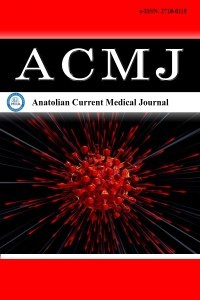1.
Christensen K, Doblhammer G, Rau R, Vaupel JW. Ageingpopulations: the challenges ahead. Lancet. 2009;374(9696):1196-208.
2.
Radbruch L, Payne S. White paper on standards and norms forhospice and palliative care in Europe: part 1. Eur J Palliat Care.2009;16(6):278-289.
3.
Nelson JE, Cox CE, Hope AA, Carson SS. Chronic critical illness.Am J Respir Crit Care Med. 2010;182(4):446-454.
4.
Parpucu ÜM, Küçük O, Sağ F, et al. Pre-assessment criteria for theneeds of patients in palliative care: the role of palliative care by agegroups. Turkish J Geriatr. 2023;26(3):334-346.
5.
Ibrahim JE, Anderson LJ, MacPhail A, Lovell JJ, Davis MC, WinboltM. Chronic disease self-management support for persons withdementia, in a clinical setting. J Multidiscip Healthc. 2017;10:49-58.
6.
Wiencek C, Coyne P. Palliative care delivery models. Semin OncolNurs. 2014;30(4):227-233.
7.
Reymond L, Parker G, Gilles L, Cooper K. Home-based palliativecare. Aust J Gen Pract. 2018;47(11):747-752.
8.
Ozgul N, Koc O, Gultekin M, et al. Opioids for cancer pain:availability, accessibility, and regulatory barriers in Turkiye andPallia-Turk Project. J Pediatr Hematol Oncol. 2011;33:S29-S32.
9.
Ozgul N, Gultekin M, Koc O, et al. Turkish community-based palliative care model: a unique design. Ann Oncol.2012;23(Supplement 3):iii76-iii78.
10.
Mergen H, Unluoglu I, Elcioglu O. Contemporary home careservice and family medicine in Turkiye. Home Health Care ManagPract. 2013;25(3):104-109.
11.
Emuk Y, Naz I. The current situation of palliative care in Turkiye. JCancer Policy. 2017;13:33-37.
12.
Radbruch L, Maier BO, Bausewein C. Palliative home care: whichtype for whom and when? Schmerz. 2019;33(4):285-286.
13.
Brumley R, Enguidanos S, Jamison P, et al. Increased satisfactionwith care and lower costs: results of a randomized trial of in-homepalliative care. J Am Geriatr Soc. 2007;55(7):993-1000.
14.
Ciemins EL, Stuart B, Gerber R, Newman J, Bauman M. Anevaluation of the advanced illness management (AIM) program:increasing hospice utilization in the San Francisco Bay area. JPalliat Med. 2006;9(6):1401-1411.
15.
Hughes MT, Smith TJ. The growth of palliative care in the UnitedStates. Annu Rev Public Health. 2014;35(1):459-475.
16.
Labson MC, Sacco MM, Weissman DE, Gornet B, Stuart B.Innovative models of home-based palliative care. Cleve Clin J Med.2013;80(E-Supplement 1):30-35.
17.
Maida V, Ennis M, Kuziemsky C, Corban J. Wounds and survivalin cancer patients. Eur J Cancer. 2009;45(18):3237-3244.
18.
Artico M, Dante A, D’Angelo D, et al. Prevalence, incidenceand associated factors of pressure ulcers in home palliative carepatients: a retrospective chart review. Palliat Med. 2018;32(1):299-307.
19.
Brian Cassel J, Kerr KM, McClish DK, et al. Effect of a home-basedpalliative care program on healthcare use and costs. J Am GeriatrSoc. 2016;64(11):2288-2295.
20.
Bosel J, Schiller P, Hook Y, et al. Stroke-related early tracheostomyversus prolonged orotracheal intubation in neurocritical care trial(SETPOINT): a randomized pilot trial. Stroke. 2013;44(1):21-28.
21.
Spataro R, Bono V, Marchese S, La Bella V. Tracheostomy mechanicalventilation in patients with amyotrophic lateral sclerosis: clinicalfeatures and survival analysis. J Neurol Sci. 2012;323(1-2):66-70.
22.
Pan CX, Gutierrez C, Maw MM, et al. Impact of a palliative careprogram on tracheostomy utilization in a community hospital. JPalliat Med. 2015;18(12):1070-1073.
23.
Glover TL, Kluger BM. Palliative medicine and end-of-life care.Handb Clin Neurol. 2019;167:545-561.
24.
Robinson MT, Holloway RG. Palliative care in neurology. MayoClin Proc. 2017;92(10):1592-1601.
25.
Taylor BL, O’Riordan DL, Pantilat SZ, Creutzfeldt CJ. Inpatientswith neurologic disease referred for palliative care consultation.Neurol. 2019;92(17):e1975-e1981.
26.
Newman III AJ, Kvale EA, Williams BR, Bailey FA. What about thetrach? Tracheotomy removal as a palliative care maneuver. Am JHosp Palliat Care. 2007;24(5):371-375.
27.
Chan T, Devaiah AK. Tracheostomy in palliative care. OtolaryngolClin North Am. 2009;42(1):133-141.
28.
Sherlock ZV, Wilson JA, Exley C. Tracheostomy in the acutesetting: patient experience and information needs. J Crit Care.2009;24(4):501-507.
29.
Cameron JI, Chu LM, Matte A, et al. One-year outcomes incaregivers of critically ill patients. N Engl J Med. 2016;374(19):1831-1841.
30.
Nakarada-Kordic I, Patterson N, Wrapson J, Reay SD. A Systematicreview of patient and caregiver experiences with a tracheostomy.Patient. 2018;11(2):175-191.
31.
Nagi M, Kapoor S, Kaur S, Gupta S. Effect of an intervention onperformance regarding change of tracheostomy tube among thecaregivers of the patient. Indian J Neurosurg. 2014;3(1):31-35.
32.
World Health Organization. Strengthening of palliative care as acomponent of integrated treatment throughout the life course. JPain Palliat Care Pharmacother. 2014;28(2):130-134.
33.
Langemo DK, Black J. Pressure ulcers in individuals receivingpalliative care: a National Pressure Ulcer Advisory Panel whitepaper. Adv Skin Wound Care. 2010;23(2):59-72.
34.
Lyder CH, Wang Y, Metersky M, et al. Hospital-acquiredpressure ulcers: results from the national Medicare Patient SafetyMonitoring System study. J Am Geriatr Soc. 2012;60(9):1603-1608.
35.
Allman RM. The impact of pressure ulcers on health care costs andmortality. Adv Wound Care. 1998;11:2.
36.
Hudson P. Improving support for family carers: key implicationsfor research, policy and practice. Palliat Med. 2013;27(7):581-582.
37.
Chellappan S, Ezhilarasu P, Gnanadurai A, George R, ChristopherS. Can symptom relief be provided in the home to palliative carecancer patients by the primary caregivers? An Indian study. CancerNurs. 2014;37(5):E40-E47.

